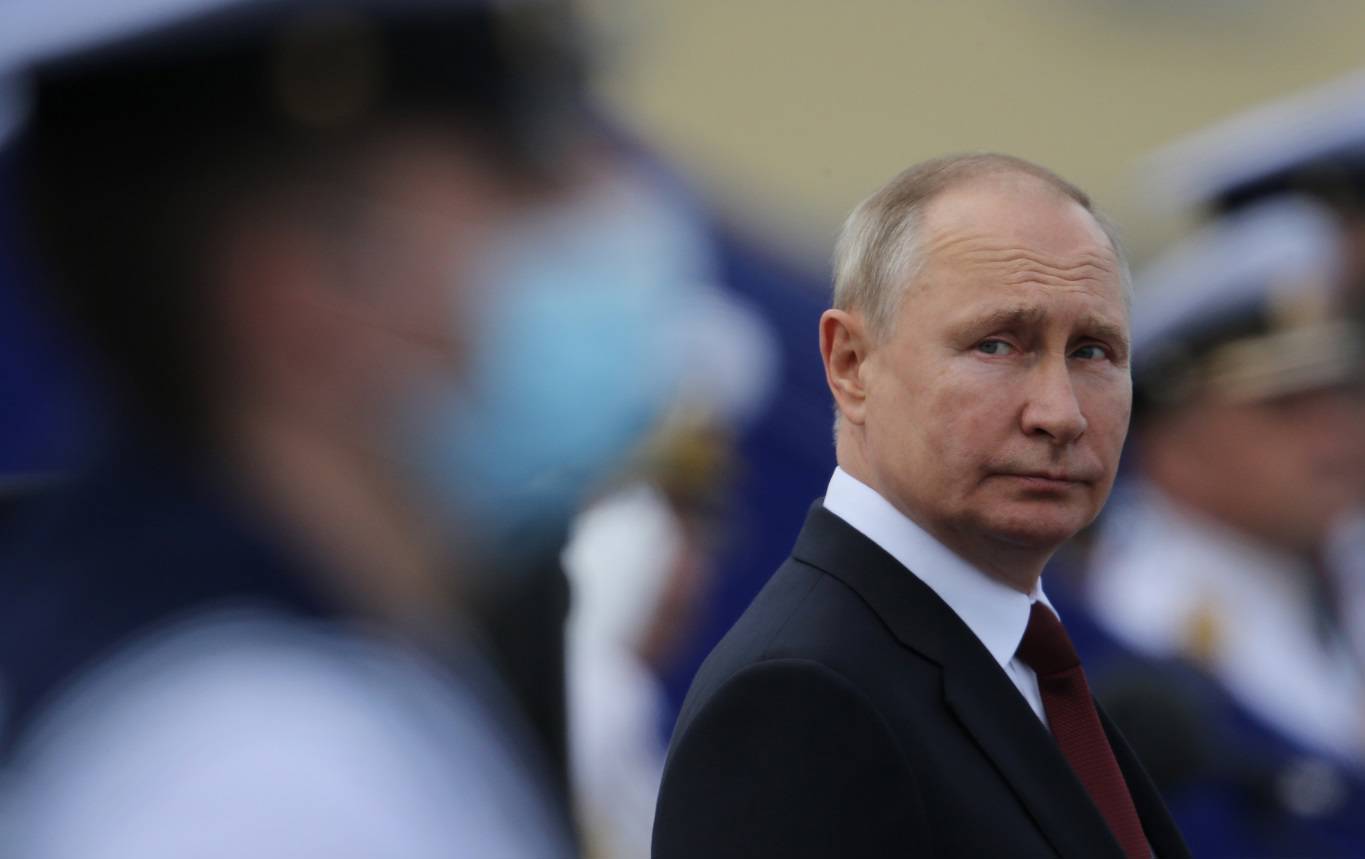ANDERS ÅSLUND

WASHINGTON, DC – Today’s Russia poses a clear and present danger to world peace. In July, President Vladimir Putin published a long article, “About the Historical Unity of Russians and Ukrainians,” effectively denying the legitimacy of Ukraine’s existence as an independent nation-state. He also has pursued a policy of military mobilization around Ukraine’s border, first in April and even more intensively in recent weeks. Senior Ukrainian and US officials, including President Joe Biden, are warning that Russia may launch a major ground war against Ukraine in early 2022.
Various causes of Russia’s aggressiveness have been suggested, but the most important one focuses on Russian decline, and whether this has made the country more dangerous. Is Putin genuinely intent on attacking Ukraine? If so, what should Ukraine and the West do about it?
The decline is obvious. Russia’s economy has been completely stagnant since 2014 (and mostly stagnant since 2009), and Putin has made clear that he has no interest in delivering economic growth or improved living standards. In US dollar terms, Russia’s GDP fell from $2.3 trillion in 2013 to $1.5 trillion in 2020. Since Putin first invaded Ukraine and illegally annexed Crimea in 2014, Russian households’ real (inflation-adjusted) disposable income has fallen by 10%.
With nothing good to say about the economy, Putin has touted Russia’s large international currency reserves and minimal public debt. These statistics appear to support his pursuit of national “greatness,” which has become synonymous with his own strongman rule.
Putin thus aspires to create a modern-day Sparta – a state focused solely on its military prowess. Since Russia’s August 2008 attack on Georgia, which revealed major military shortcomings, the Kremlin has undertaken substantial military modernization, while much of the rest of Europe has continued its post-Cold War disarmament.
But Russia’s relative military might probably has already peaked. According to the Stockholm International Peace Research Institute, Russian military expenditures reached $62 billion in 2020, a year when US military expenditures were $778 billion and China’s were $252 billion. Even India surpassed Russia with its $73 billion military budget.
Seeing the writing on the wall, Putin may now be thinking that if Russia is going to benefit from its military strength, it had better flex its muscles now, before the country’s economic foundation erodes further. Moreover, this year’s commodity price boom (particularly in energy and metals) has strengthened the Kremlin’s incentive to strike while the iron is hot.
Like a cornered animal, declining powers are often the most dangerous ones. As Graham Allison of Harvard University reminds us in Destined for War, it was a declining power, Austria-Hungary, that started World War I by declaring war on Serbia. In the current context, the Russians appear to be planning a tank and artillery campaign reminiscent of World War II; if so, their war machine is as outdated as Putin’s view of Ukraine.
A contemporary, peace-loving Western reader might wonder why Putin would want to start a war. Surely he is familiar with the legacy of Vyacheslav von Plehve, the Russian interior minister who, in 1904, famously argued that, “To avert a revolution, we need a small, victorious war!” Soon thereafter, von Plehve was assassinated by a revolutionary. Even so, the 1904-05 Russo-Japanese War ensued. That conflict was neither small nor victorious – and it ended up catalyzing the revolution of 1905.
Putin is most likely focused more on his own small, successful wars in Georgia in 2008 and Crimea in 2014, which led to his highest approval ratings ever. Since then, his approval has reached new lows, and with public discontent building, he has ratcheted up political repression to a level not seen since his hero, the late Soviet leader Yuri Andropov, was in power (1982-84).
To justify his increasingly extreme repression, Putin has cranked up the Kremlin’s propaganda machinery to Soviet levels. But anti-Western messaging will not persuade the population to support him. For that, he needs another highly successful war. And because Russia stands no chance in a big war against the whole West, it needs a much more limited conflict. Hence, Putin’s choice of Ukraine, which he calls a Western vassal.
“The human cost for Ukraine would be catastrophic, but Ukrainians would not mourn alone. Russia would also suffer massive losses. Images of coffins returning to Russia from the front lines in Ukraine would spread like a virus across social media and would soon prove too much for even the Kremlin censors to contain. A major war in Ukraine would plunge the whole of Europe into crisis.”
US intelligence agencies warn that Russia is mobilizing some 175,000 troops near its border with Ukraine. But a force of that size would not suffice. Ukraine’s active military forces comprise 250,000 troops, many with ample battle experience, who would be defending their homeland against soldiers who may have no higher aim than collecting their salaries.
Russia’s mistake in 1904 was that it did not take Japan seriously as a military power. When Japan emerged victorious, the Czar’s power was fatally weakened, allowing for the revolution that followed. A 2022 Russo-Ukrainian war could prove to be an even bigger folly, one that Putin is unlikely to survive.
In the meantime, the Kremlin must not be allowed to benefit domestically from its saber-rattling. The West responded with only limited sanctions following Putin’s previous aggression against Georgia and Ukraine. It must learn from those mistakes and stand fully with Ukraine. In addition to providing military supplies and training for Ukraine, the West should impose truly devastating sanctions against Russia. Biden and US Secretary of State Antony Blinken have promised as much. They and America’s European allies now must follow through.
No comments:
Post a Comment